This week we examine how artists develop work that appeals to senses beyond sight – taste, touch, smell and hearing. Then in the Western philosophical tradition, vision is often associated with thinking, and I agree with the question of whether Neimanis’ knowledge of the senses is open to another mode of relationship. As we all know, humans have five sensory channels: sight, hearing, smell, taste, and touch. Usually these sensory channels perform their respective functions, receiving and processing all kinds of information around people. The visual and other senses seem to be parallel to each other without interfering with each other. The form language is perfectly connected and blended, which in turn promotes the formation of a more perfect experience effect. This is a generalization of the transformation and combination of vision and other senses.
In many works of art, people can read the meaning of other senses from the visual language. When vision and other senses are integrated and interlaced, they will present people with dual or multiple sensory stimulation from vision to other sensory perceptions, which will strengthen people’s senses and realize the conversion and combination of vision and other senses.
The “immersive art” that is often popular now uses the combination of the “five senses” of sight, hearing, touch, smell, and taste to have a wonderful sensory interactive experience with the audience, which proves that “visual language” is no longer the only one in the art world.
Now our pursuit of works of art is not just the pursuit of sensory beauty. When we watch artworks, we read more or look at the “unseen” behind the visual sense through our thoughts and imagination. It is this level of seeing that constitutes the subject of our aesthetic activities. In many exhibitions, this limitation of vision is shown. Compared with the scope of human perception, the human visual ability has become extremely poor. On the one hand, this poverty is manifested in the spatial distance and scope of vision. This limitation leads to a lot of visual content that we must use media to obtain. See, the content seen through the media has been artificially selected and limited. On the other hand, our visual attention is also limited in time, too slow processes can be mistaken for stationary, and too swift processes can make us unable to see clearly. Therefore, galleries need multi-sensory design, but galleries also need to retain traditional model concepts and transform to contemporary models and try to adapt to the current political, social, historical, and aesthetic requirements.
(Case 1 about multi-sensory galleries🙂 In 1998, Cissell started the “City Taste” project, including Berlin, Paris, Istanbul, Shanghai, etc. She hopes to capture the diversity of the city by searching for scents and to re-explore its hidden qualities; in Cissell’s world, smells are both good and bad, because “all smells hide potential pleasures”. The nose is like a painter’s brush to Cecil, helping her to record these wonderful “flavors”. Sisel’s nose is sensitive enough to discern the source of the smell in every city. Back in the lab, she uses equipment to break down the items representing the source of these odors into odor molecules and archive them.

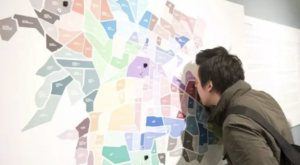
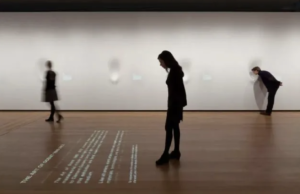
(Case 2 of the multi-sensory gallery🙂 “Transparent Sound” in Shanghai in 2017 demonstrated the visibility and interactivity of sound. Among them, “This Moment” brought by the artist Denis Vansant wrote more than 200 notes made of gold foil on the glass. The glass made a clear sound like a wind chime with the vibration and collision with each other, and the projection of light and shadow, the feeling of audio-visual interaction is very poetic.
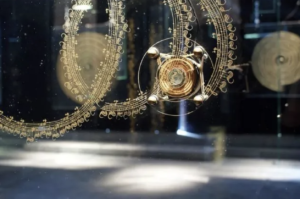
(Case 3 of the multi-sensory gallery🙂 In Anya Gallaccio‘s work, she uses organic life through apples, vegetables, flowers, salt, etc., relying on changes in the appearance and smell of plants and food itself to affect the viewer, using the material itself life cycle to discuss the relationship between life and time. She covered the floor of the whole house with bright red roses and let them wither slowly with the exhibition.
Duchamp once encouraged artists to try “anti-retina art”, and no longer regard beauty as a necessary condition of art, but to improve the ideological dimension of the work. We cannot say that the above works of art lose visual aesthetics without visual effects. , Art is born in the mind of the artist, and the source of the artist’s creativity comes from the senses, just like the blind person cannot take pictures or paint, and the almost deaf Beethoven uses bone conduction to fight against fate.
During the week we practiced to better think about whether our listening is colonizing the voices around us, is it possible to decolonize listening? How can we disrupt the colonial classifications and associations between soundness and race, soundness and domination? We consider how artists can use sensory methods to encourage different ways of relating to nature and each other.
In addition, through “Towards A City Observatory: Constellations of Art, Collaboration and Locality”, the observatory of the city is a metaphorical symbol of “panorama”, the observatory is the starting point of the link, the meeting point of ancient and modern Edinburgh, and history connects Edinburgh to the world. Connected portals, a concept by Robert Barker. On this Calton Hill tour, we focus more on the visual experience of the mountaintop view, sky, clouds, and sea, the hearing would help, but in our study we used hearing as the main factor in decolonizing perspective, exploring Different ways to transcend the visual senses and the world. I show our practice process in the form of design dialogue illustrations.
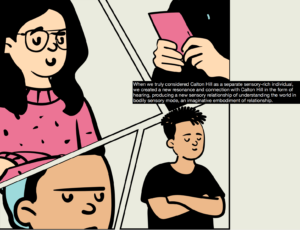
As listeners, we brought that connection into our interactions with Calton Hill. We strive to listen to Calton Hill in this way.
Going back to the question at the beginning of Neimanis, it is a specific relationship that entangles the audience with the world and the categorization and order of things. In the process of auditory attunement, we form images in our consciousness, as we see in blue, creating an infinite visual universe with static and imageless visual presentations.
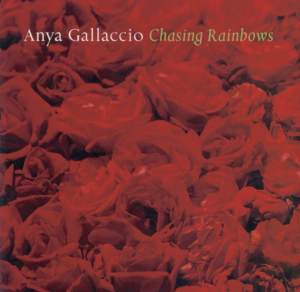
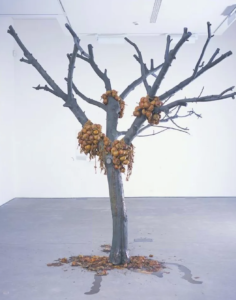


Visual method or other sensory methods are all ways to display, to convey something so trying other senses to feel and describe what we think and what we have is also meaningful. In addition, using other sensory organs is also a kind of empathy.